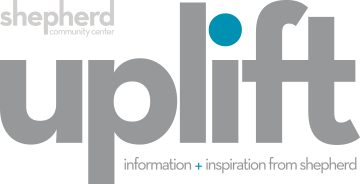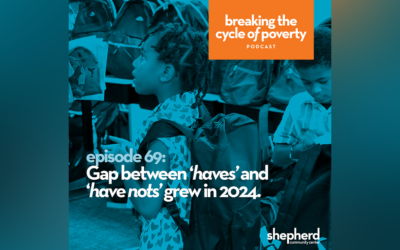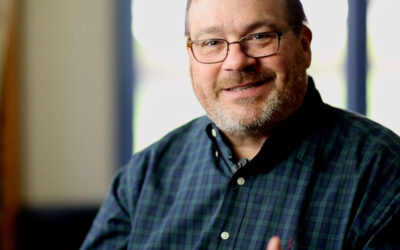What does it take for a person to break free from poverty? Is it about money alone? Or are other personal assets needed to ensure long-term independence and sustainability?
“Remember the old Indiana Jones movies, where Indy had to cross a swinging bridge missing wooden planks high above a chasm?” Shepherd Community Center Executive Director Jay Height said. “It’s like that for a person trying to move from a life of poverty and dependence to a life of sustainability and independence. We’ve identified 10 assets that are essential for our neighbors to make it across that bridge. If one or two is missing, they may be OK. But more than that, they probably won’t be able to break free from the cycle of poverty.”
Here are the assets the Shepherd has determined are essential:
- Faith in a personal God.
- Physical health.
- Strong relationships that provide help in times of need.
- Emotional health that enables appropriate responses to stress and disappointments.
- Mental acuity.
- Good role models who demonstrate stability in their own lives.
- The ability to advocate for yourself.
- An understanding of the dominant culture.
- A future orientation that enables long-term planning.
- Enough money to meet essential needs.
Notice that money is last on the list. It’s not that money isn’t important. It’s essential, of course, to meet basic needs. But other personal assets are even more critical; otherwise, a person can burn through a significant amount of money in a short amount of time without a sustainable path forward.
Notice as well that faith in God is at the top of the list. That’s not surprising – Shepherd is a Christian ministry, after all. But Height said the Shepherd team sees faith as foundational for another reason.
“So many of the social problems and violence we see in our city and our nation are rooted in the lack of hope,” Height said. “When people don’t have hope, bad things tend to happen. Our faith informs our hope. We have hope for our families and ourselves because of who God is and what He’s done for us.”
Much of the work that the Shepherd team does in the community is built around helping neighbors attain and strengthen each of the 10 assets. That comes about through forging relationships, mentoring adults and students, offering educational opportunities for children and parents, and providing support services such as childcare.
And all of that is centered on the overriding goal of helping neighbors gain the ability to meet their own needs for the long term. That’s what it means to break the cycle of poverty.
As Height noted, the 10 assets are planks in a bridge that may appear impossible for many to cross given their starting point. But good guides – good shepherds – know the journey requires one step on one solid plank at a time.




